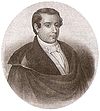
Mariano Moreno was an Argentine lawyer, journalist, and politician. He played a decisive role in the Primera Junta, the first national government of Argentina, created after the May Revolution.

Cornelio Judas Tadeo de Saavedra y Rodríguez was an Argentine military officer and statesman. He was instrumental in the May Revolution, the first step of Argentina's independence from Spain, and became the first head of state of the autonomous country that would become Argentina when he was appointed president of the Primera Junta.

The Mariano Moreno National Library is the largest library in Argentina. It is located in the barrio of Recoleta in Buenos Aires. The library is named after Mariano Moreno, one of the ideologists of the May Revolution and its first director.
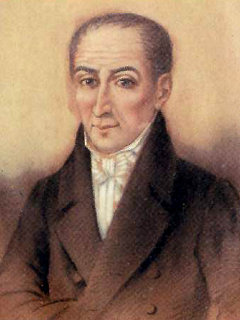
Juan José Esteban Paso, was an Argentine politician who participated in the events that started the Argentine War of Independence known as May Revolution of 1810.

Miguel de Azcuénaga was an Argentine brigadier. Educated in Spain, at the University of Seville, Azcuénaga began his military career in the Viceroyalty of the Río de la Plata and became a member of the Primera Junta, the first autonomous government of modern Argentina. He was shortly exiled because of his support to the minister Mariano Moreno, and returned to Buenos Aires when the First Triumvirate replaced the Junta. He held several offices since then, most notably being the first Governor intendant of Buenos Aires after the May Revolution. He died at his country house in 1833.

Operations plan is a secret document attributed to Mariano Moreno, that set harsh ways for the Primera Junta, the first de facto independent government of Argentina in the 19th century, to achieve its goals. Some historians consider it a literary forgery, and others consider it true.

Juan Larrea was a Spanish businessman and politician in Buenos Aires during the early nineteenth century. He headed a military unit during the second British invasion of the Río de la Plata, and worked at the Buenos Aires Cabildo. He took part in the ill-fated Mutiny of Álzaga. Larrea and Domingo Matheu were the only two Spanish-born members of the Primera Junta, the first national government of Argentina.
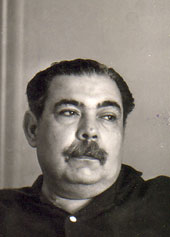
René Portocarrero was a Cuban artist recognised internationally for his achievements.
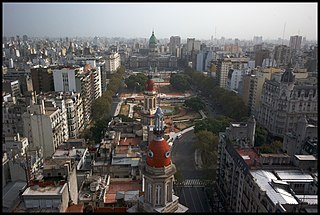
Congressional Plaza is a public park facing the Argentine Congress in Buenos Aires. The plaza is part of a 3 hectare open space comprising three adjoining plazas to the east of the Congress building. The Kilometre Zero for all Argentine National Highways is marked on a milestone at the plaza.

José Moreno Carbonero was a Spanish painter and decorator. A prominent member of the Málaga School of Painting, he is considered one of the last great history painters of the 19th century. He was a celebrated portrait painter who enjoyed the patronage of Madrid's high society. He also created genre scenes and some landscapes, vedutas and still lifes.

Manuel Máximiliano Alberti was an Argentine priest from Buenos Aires when the city was part of the Viceroyalty of the Río de la Plata. He had a curacy at Maldonado, Uruguay during the British invasions of the River Plate, and returned to Buenos Aires in time to take part in the May Revolution of 1810. He was chosen as one of the seven members of the Primera Junta, considered the first national government of Argentina. He supported most of the proposals of Mariano Moreno and worked at the Gazeta de Buenos Ayres newspaper. The internal disputes of the Junta had a negative effect on his health, and he died of a heart attack in 1811.
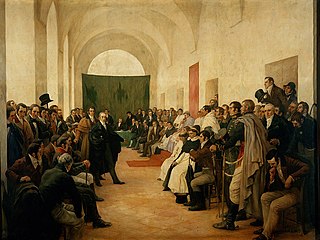
Cabildo abierto del 22 de mayo de 1810 is a portrait made by the Chilean artist Pedro Subercaseaux. It shows the artist's interpretation of the Open Cabildo that took place in Buenos Aires on May 22, 1810, in the Buenos Aires Cabildo, and which was a turning point of the May Revolution.
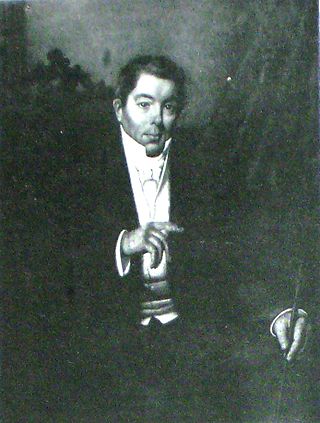
Manuel Moreno was an Argentine politician, brother of Mariano Moreno. He was one of the founders of the Federal Party in the province of Buenos Aires.
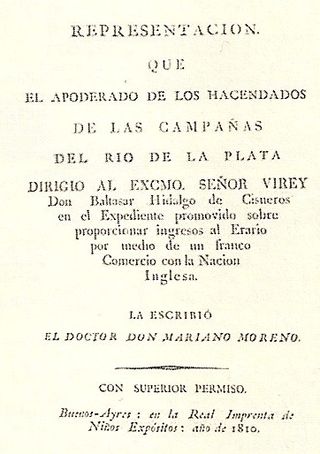
The Representation of the Landowners is an 1809 economic report written by Mariano Moreno, that described the economy of the Viceroyalty of the Río de la Plata. It was written by Moreno on behalf of the hacendados, to request then viceroy Baltasar Hidalgo de Cisneros to reconsider the annulment of free trade he had decided on a short time earlier. It is considered the most complete economic overview from the times of the colony.
The Honours Suppression decree was a decree of the Primera Junta, first national government of Argentina, in 1810 which removed from its members the honours and privileges inherited from the former monarchic system. It was designed by the secretary Mariano Moreno.

The May Revolution was a week-long series of revolutionary events that took place from May 18 to May 25, 1810, in Buenos Aires. It started the Argentine War of Independence, and it is considered the birth of modern Argentina.

Pedro León Maximiano María Subercaseaux Errázuriz was a Chilean painter, son of the painter and diplomat Ramón Subercaseaux Vicuña. He painted many portraits about events from the history of Chile, such as the Crossing of the Andes. He painted portraits of the history of Argentina requested during the Argentina Centennial. He married Elvira Lyon Otaégui in 1907, but the Pope later annulled their marriage so that they could both get into religious orders.
Maríano Moreno Airport is a joint public/military airport located south of José C. Paz, a western suburb in the Greater Buenos Aires metropolitan region of Argentina. The airport is named after Argentinian patriot Mariano Moreno.
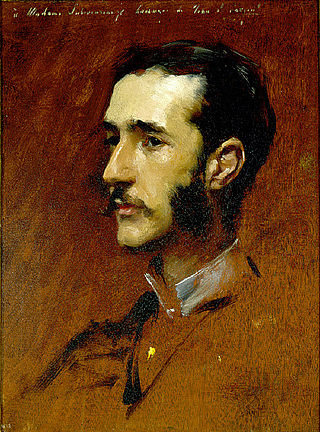
Ramón Subercaseaux Vicuña was a Chilean painter, politician and diplomat.

A Portrait of the Daughters of Ramón Subercaseaux is an 1892 oil painting by the Swedish artist Anders Zorn.




















